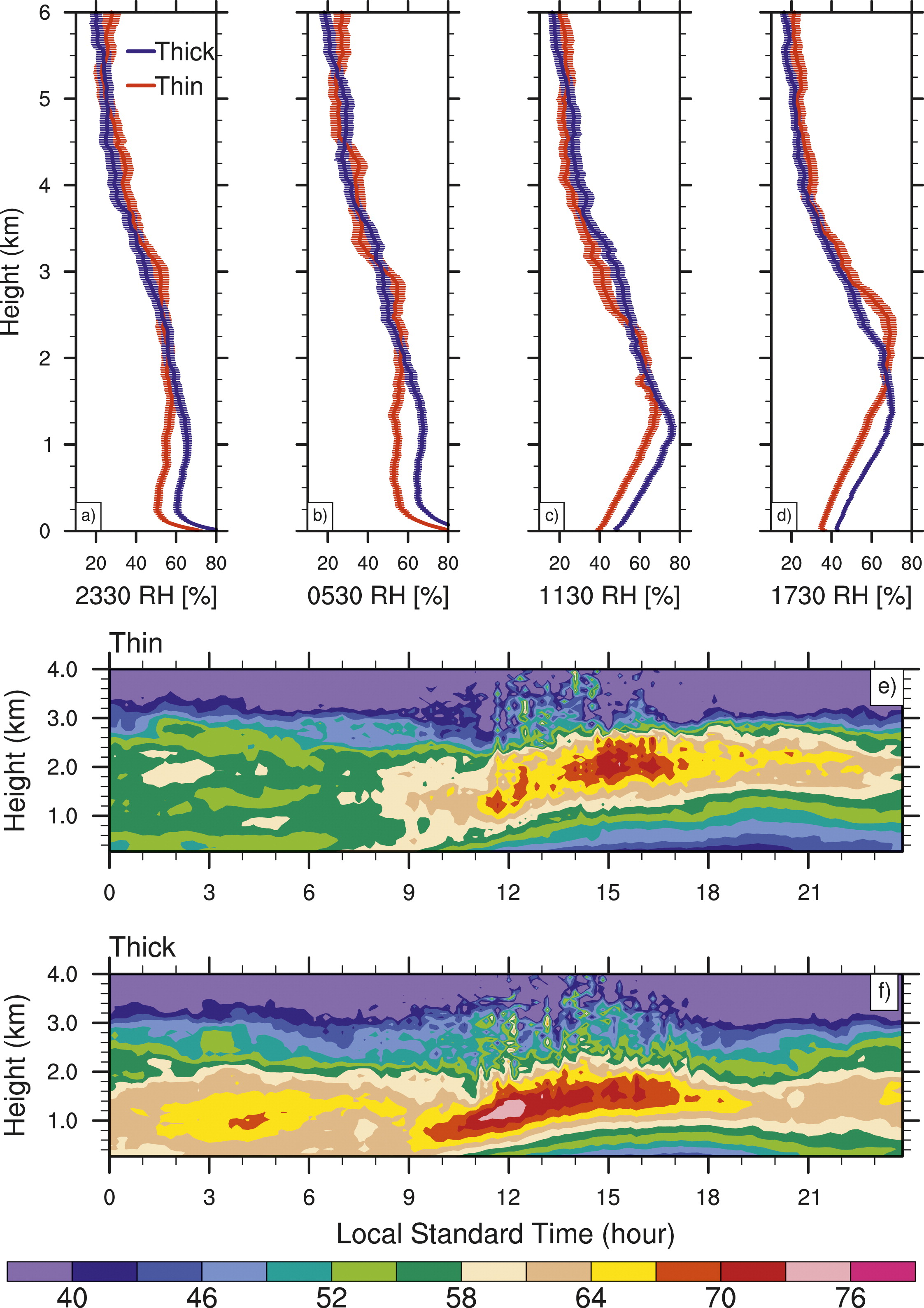What Controls the Vertical Extent of Continental Shallow Cumulus?
Submitter:
Zhang, Yunyan — Lawrence Livermore National Laboratory
Area of research:
Cloud Processes
Journal Reference:
Science
Fair-weather non-precipitating shallow cumuli are often observed during summertime over land. They are small in size, optically thin, and short-lived but still cause a significant net radiative cooling at the surface. Stull (1985) defined “forced” and “active” fair-weather shallow cumulus. Forced cumulus clouds result from thermals that overshoot the lifting condensation level but never reach the level of free convection. Given their negative buoyancy, forced cumulus are usually flat with the horizontal extent sometimes comparable with the mixed-layer depth. In contrast, active cumuli may possess positive buoyancy, penetrate the entrainment zone, reach their level of free convection, and are further capped by the upper inversion, if present.
Impact
Scientists at Lawrence Livermore National Laboratory used 13-year summertime observations at the Atmospheric Radiation Measurement (ARM) Climate Research Facility's Southern Great Plains (SGP) site to study fair-weather shallow cumuli. To roughly separate forced from active shallow cumulus, days are categorized into “thin” or “thick” shallow cumulus days according to whether the daytime average cloud depth exceeds 300 meters. By comparing diurnal-cycle composites of these two regimes, the scientists documented differences in cloud properties and their radiative impacts. The differences in environmental conditions provide clues as to what controls the vertical extent of shallow cumulus.
Higher boundary-layer relative humidity is found on thick-cloud days, associated with large-scale moisture advection before sunrise. This higher boundary-layer relative humidity not only contributes to a lower cloud base but also to the penetrating ability of an air parcel to reach higher levels, and thus leads to larger cloud vertical extent.
Although not as significant as boundary-layer relative humidity, the vertical extent of shallow cumulus also varies with thermal stability and surface fluxes. Enhanced stability above cloud on thin-cloud days may limit cloud vertical extent. A larger sensible heat flux on thin-cloud days encourages greater entrainment of dry air into the boundary layer, whereas a larger latent heat flux on thick-cloud days helps sustain higher afternoon boundary-layer relative humidity. These heat flux differences help maintain the boundary-layer relative humidity differences that appear to control cloud vertical extent.
Summary
This study is among the first few to systematically investigate forced and active clouds based on long-term composite observations and further confirms that forced clouds are often related to boundary-layer large-eddy overshooting and are limited by a stronger inversion layer, while higher moisture content in the boundary layer and a weaker stable layer above favor active clouds with significant vertical extent.
Through this study and Zhang and Klein (2010), we have established an observational testbed of different convection regimes over SGP, from forced and active non-precipitating fair-weather shallow cumuli to shallow cumulus that transitions to late-afternoon deep convection. In the future we intend to use these results to test large-scale parameterizations using single-column models. Large-eddy simulations will also be performed to test the relative importance of different environmental conditions such as relative humidity in and above boundary layer, atmospheric stability above cloud, and surface fluxes in controlling the different shallow cumulus types and affecting the transition from shallow to deep convection over land. New instruments and measurements at ARM sites, such as retrievals of vertical velocity and cloud properties, will be a great help for such studies in the near future.



